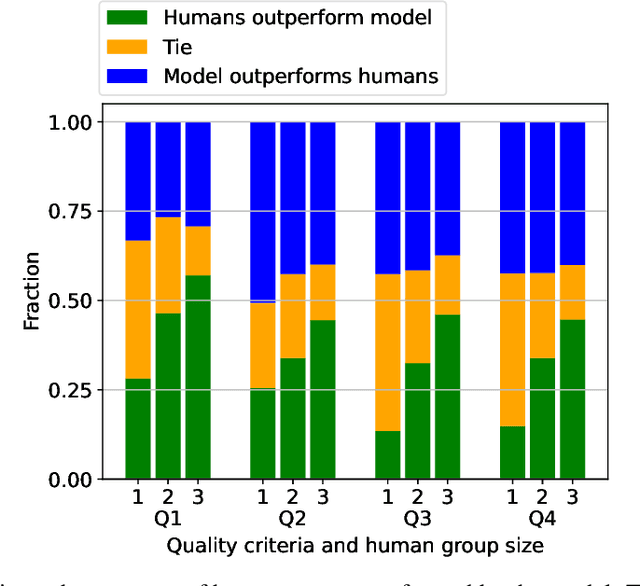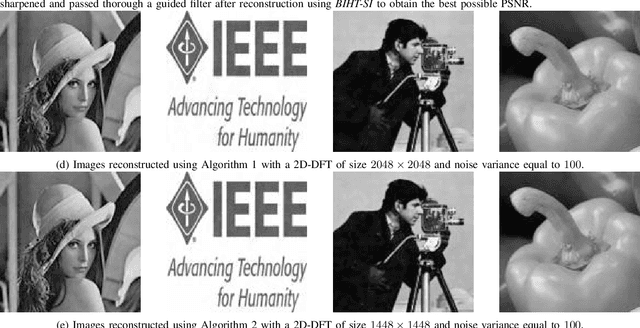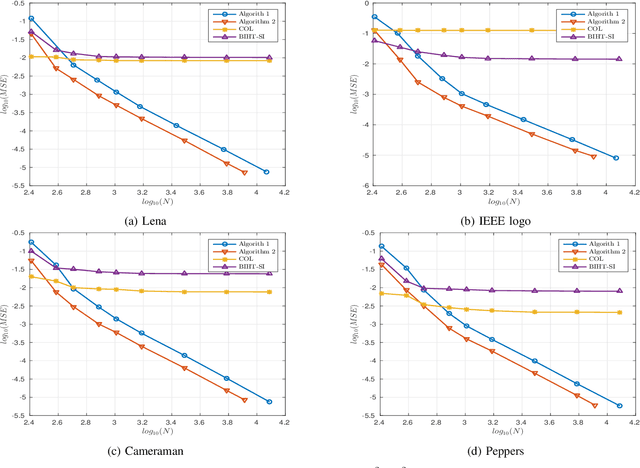Mohak Goyal
Estimating Contribution Quality in Online Deliberations Using a Large Language Model
Aug 21, 2024



Abstract:Deliberation involves participants exchanging knowledge, arguments, and perspectives and has been shown to be effective at addressing polarization. The Stanford Online Deliberation Platform facilitates large-scale deliberations. It enables video-based online discussions on a structured agenda for small groups without requiring human moderators. This paper's data comes from various deliberation events, including one conducted in collaboration with Meta in 32 countries, and another with 38 post-secondary institutions in the US. Estimating the quality of contributions in a conversation is crucial for assessing feature and intervention impacts. Traditionally, this is done by human annotators, which is time-consuming and costly. We use a large language model (LLM) alongside eight human annotators to rate contributions based on justification, novelty, expansion of the conversation, and potential for further expansion, with scores ranging from 1 to 5. Annotators also provide brief justifications for their ratings. Using the average rating from other human annotators as the ground truth, we find the model outperforms individual human annotators. While pairs of human annotators outperform the model in rating justification and groups of three outperform it on all four metrics, the model remains competitive. We illustrate the usefulness of the automated quality rating by assessing the effect of nudges on the quality of deliberation. We first observe that individual nudges after prolonged inactivity are highly effective, increasing the likelihood of the individual requesting to speak in the next 30 seconds by 65%. Using our automated quality estimation, we show that the quality ratings for statements prompted by nudging are similar to those made without nudging, signifying that nudging leads to more ideas being generated in the conversation without losing overall quality.
Signal Reconstruction from Quantized Noisy Samples of the Discrete Fourier Transform
Jan 09, 2022



Abstract:In this paper, we present two variations of an algorithm for signal reconstruction from one-bit or two-bit noisy observations of the discrete Fourier transform (DFT). The one-bit observations of the DFT correspond to the sign of its real part, whereas, the two-bit observations of the DFT correspond to the signs of both the real and imaginary parts of the DFT. We focus on images for analysis and simulations, thus using the sign of the 2D-DFT. This choice of the class of signals is inspired by previous works on this problem. For our algorithm, we show that the expected mean squared error (MSE) in signal reconstruction is asymptotically proportional to the inverse of the sampling rate. The samples are affected by additive zero-mean noise of known distribution. We solve this signal estimation problem by designing an algorithm that uses contraction mapping, based on the Banach fixed point theorem. Numerical tests with four benchmark images are provided to show the effectiveness of our algorithm. Various metrics for image reconstruction quality assessment such as PSNR, SSIM, ESSIM, and MS-SSIM are employed. On all four benchmark images, our algorithm outperforms the state-of-the-art in all of these metrics by a significant margin.
 Add to Chrome
Add to Chrome Add to Firefox
Add to Firefox Add to Edge
Add to Edge